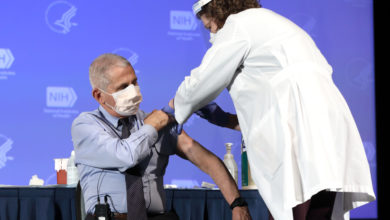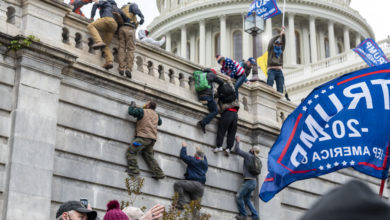Weekly Reads: Multiracial Families, an Infant Medicine Recall and Remembering 9/11

Howdy Readers, it’s already mid-September. The kids are well back in school, the mornings are picking up a comfortable chill and football season has kicked off. I wrote about the latter event at my other gig, The Game Haus, where I did a deep dive into my beloved Bengals come from behind victory over the Indianapolis Colts.
In last month’s Atlantic, David French wrote about the adoption of his daughter Naomi from Ethiopia in 2003, and the (racist) attacks on his family from the right and the (not at all equivalent) “attacks” from the left. Now first I must admit some bias. French is an Ur-example of the kind of milquetoast never-Trump “resistance” conservative that the Atlantic feels compelled to harbor so that they aren’t accused of liberal bias. He’s essentially David Frum, but instead of writing speeches for Bush the lesser justifying the invasion of Iraq, he’s an Army veteran who actually invaded Iraq. And I would love to ignore that background, but the false equivalence he indulges in to frame his argument is not only infuriating, it’s an active conservative strategy to dull critique of conservatism. Two Slate authors responded effectively though.
Kaylee Domzalski, herself adopted from South Korea, examined her own experience as a person of color raised in a white family surrounded by white communities, an experience that left her “with a sense of loss, placelessness, and sometimes regret…”
That is the fundamental, complicated truth about my adoption. But according to David French, writing about his adopted Ethiopian daughter this week in the Atlantic, my feelings are really just a product of an America “obsessed with questions of race and identity”—a sad result of a culture that can’t accept adoptive parents are disproportionately white and adopted children are not. French writes that he and his wife “believed that race was no barrier to unity for a family of genuine faith”—he is evangelical—but that his optimism has been shattered because of attacks from the “left” that were “soon to be matched and exceeded by attacks from a racist right.” The attacks from the right included a Photoshopped picture of French’s daughter in a gas chamber. On the left? The audacity to ask “questions about whether a white family’s love can harm a child of a different race.” Even as he acknowledges that they are very different, French draws a direct line between these responses, as if they exist on a single continuum designed to undermine his family.
In his piece, French cited Kathryn Joyce’s 2013 book The Child Catchers: Rescue, Trafficking and the New Gospel of Adoption, as an example of the left’s hostility towards his family, and multi-racial adoption in general. Joyce responded with What David French’s Atlantic piece is Missing.
At the height of the Christian adoption movement in the early 2010s, the Scripture verse French cites was in wide circulation, as advocates proclaimed that God was “the first transracial adoptive dad” and called on Christians to spread a viral adoption culture in their congregations. “Get as many people in the church to adopt,” one leader said, “and adopt as many kids as you can.”
Books promoting “adoption theology” positioned adoption as a means of evangelizing. One argued: “[T]he ultimate purpose of human adoption by Christians, therefore, is not to give orphans parents, as important as that is. It is to place them in a Christian home that they might be positioned to receive the gospel.”
As French points out, a good portion of my book does critically assess that theology and its effects. But that’s not the main point of the book. Most parents in the movement were motivated by more basic reasons than theology: to start or grow their family, and to help address what they’d been told was an overwhelming global “orphan crisis” composed of 143 million to 210 million orphans in need of homes.
The problem was that most of those children weren’t orphans in the way people generally think of the term. The vast majority had lost only one parent or lived with extended family.
The orphan crisis, really, was a crisis of poverty, instability, and catastrophe—both natural and man-made. And adoption, as a multibillion-dollar industry, had become one where too often poor or vulnerable families were recruited, coerced, or duped into relinquishing children to fill Western demand. In other words, people with good intentions became a dangerous driving force in an industry that operates on supply and demand as much as any other.
While I was at Slate I found this excellent article about James Baldwin’s 1976 children’s book Little Man, Little Man, a beautiful, complex vision of black childhood.
The FDA has announced the recall of more than 30 kids medicines due to microbial contamination. The company, King Bio, is a homeopathic medicine company. Did they explain to the FDA that the microbial contaminates were in far to high a concentration to have any homeopathic effects?
Libby Anne examines the (hehe) evolution of young earth creationists models of the Genesis Flood.

Growing up in a young earth creationist home, I was taught the vapor canopy model. According to this model, when God “divided the wars which were under the firmament [i.e. the sky] from the waters which were above the firmament” in Genesis 1, he created a canopy of water above the atmosphere which created a greenhouse environment on earth—excess oxygen enabled humans to live for hundreds of years while similar effects sustained the rich vegetation needed for dinosaurs and other massive land mammals to survive.
During the flood, this water fell to earth as torrential rain. After the flood, the atmosphere was different. Gone was the excess oxygen, and human life spans began to shrink. Gone was the hothouse environment that had sustained massive quantities of tropical vegetation, and the dinosaurs struggled to survive in this new climate. Many young earth creationists, though, have recently abandoned this model. Given my recent musings about whether creationists (like actual scientists) change their minds to follow the data, this change is worth exploring.
The 9-11 terrorist attacks were remembered this week. Gabby at Design Mom rounded up some thoughtful links remembering and reflecting on the tragedy. For my own part, as I was glued to the unfolding events on CNN. I remember describing the first tower falling to my not yet wife on the phone even though I knew she was watching the same thing in her office. What neither of us realized was that her father had been one of the lucky ones, attending a professional conference at the World Trade Center complex he had evacuated immediately after the first plane hit. Our family was lucky that day. So many others weren’t, and the avalanche of pain started on that sad day is still tumbling…
https://youtu.be/xDQbNFHKJ8w
Featured Image Credit: Blotz Photo Arts




